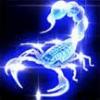dear erwan
thanks again for extending skills of vmount.
it would certainly be helpful if the internal version number was also changed to identify the different files.
the here downloadable file in the forum is still called version 0.8.dare you and finally give vmount the deserved 1 before the comma.
Sincerely T.
Good idea indeed.
Now done : i will let my IDE handle the build number (autoincrement) and my code will automatically handle this as well.
Now in version 1.0.0.0 ![]()
Also, I have sligthly reviewed latest 2 commands and added 1 new one.
You can turn either a VHD/VHDX or (new) a flat disk image file into a VHD/VHDX (fix or dynamic).
You can now also (new) turn a VHD/VHDX (fixed or dynamic) into a flat disk image file.
As source, you can actually even input \\.\physicaldriveX (up to you then to put the disk offline or readonly before).
No fancy code here to convert from one format to the other : all I do is read 1MB blocks and feed this into ms virtual disk api who will do it all (VHD<->VHDX, Fixed<->Dynamic, VHD/VHDX<->IMG).
vmount convert2fixed path_to_vhd_or_vhdx_or_img path_to_vhd_or_vhdx vmount convert2dynamic path_to_vhd_or_vhdx_or_img path_to_vhd_or_vhdx vmount convert2img path_to_vhd_or_vhdx path_to_img




















